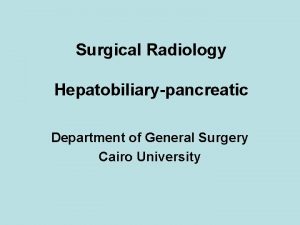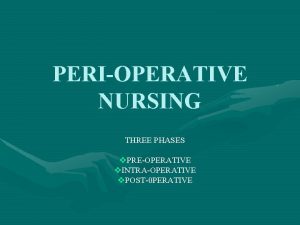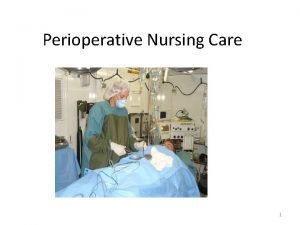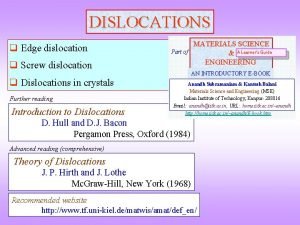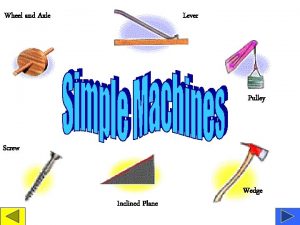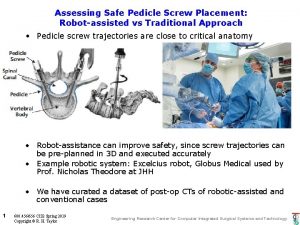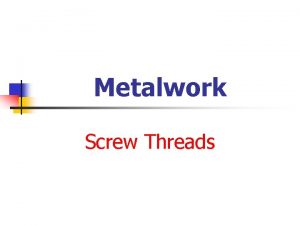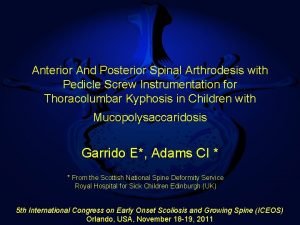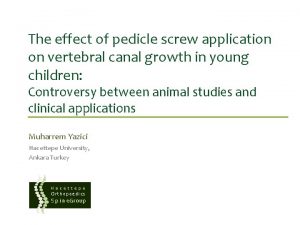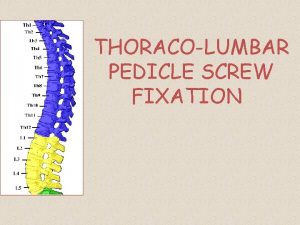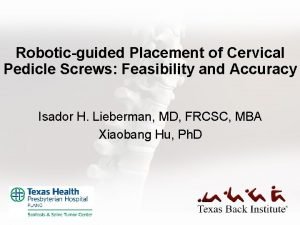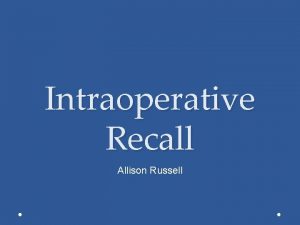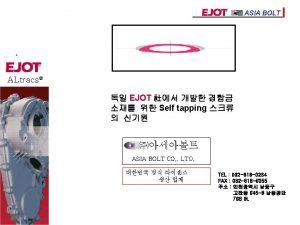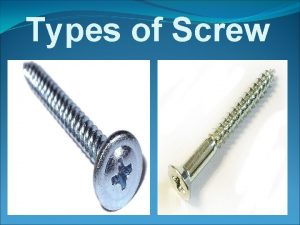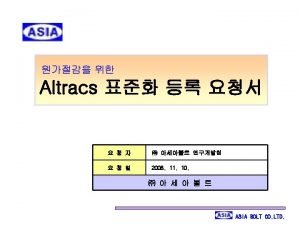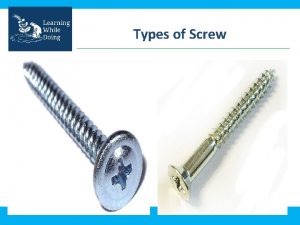Pediatric Pedicle Screw Placement Using Intraoperative CT and












- Slides: 12

Pediatric Pedicle Screw Placement Using Intraoperative CT and 3 D Image-Guided Navigation A. Noelle Larson, MD David W. Polly, Jr. , MD Edward R. Santos, MD Charles G. T. Ledonio, MD Jonathan N. Sembrano, MD Cary H. Mielke, MD Kenneth J. Guidera, MD

Disclosures • David W. Polly, Jr. , MD - Previous consulting agreements were: 1) Medtronic Spine ended 10/1/2009; 2) Medtronic Navigation ended 6/28/2010. • Edward R. Santos, MD – Research: Medtronic, Synthes • A. Noelle Larson, MD - none • Charles G. T. Ledonio, MD – Research: SRS, POSNA, SRF, Medtronic, Sterilmed • Jonathan N. Sembrano, MD – Research: Nuvasive • Cary H. Mielke, MD - none • Kenneth J. Guidera, MD - none

Introduction Pedicle screws: • Biomechanical control of spinal deformity • Improved correction • Lower rates of reoperation Lenke, Kuklo, Ondra, Polly, Spine 2008 Bridwell, Spine 1999 Suk et al. , Spine 1995 Kuklo TR, Potter BK, et al. Spine 2007

How to avoid? • Rare catastrophic injury to pleura, heart, viscera • Return to OR TECHNIQUES for SAFE SCREW PLACEMENT – Anatomic landmarks – Probing of the tract – Fluoroscopy – CT C-arm – Stimulation of the screw – Intra-operative CT Samdani, Ranadi et al. , Neurosurgery 2010 Parker, Mc. Girt et al. , Neurosurgery 2011 Tschoeke et al. , Spine 2011 – Navigation

Methods: Retrospective Cohort Study • Pediatric patients, posterior spine fusion (PSF) for deformity – 984 screws / 50 children • Comparison group of Adults – PSF for degenerative disease and deformity – 1511 screws /177 adults • Primary Outcome Measure Screw Accuracy = 1 – screws revised screws placed

Results: Pediatric Patients • 35 of 984 screws (3. 6%) were revised (27 redirected, and 8 removed) • 96. 4% accuracy rate • No patients returned to the OR due to screw malposition

% Malpositioned Screws Screw Revision Peds vs. Adults *P=0. 008 3. 6% Navigated Screws - Peds (35 of 984) 1. 8% Navigated Screws - Adults (28 of 1511)

Reported Screw Accuracy in the Literature • Kosmopoulos V, Schizas C, Spine 2007 (adults, 10, 250 screws) – 92. 0% with navigation vs. 86. 6% without navigation • Ledonio CG, Polly DW, Vitale MG, Wang Q, Richards BS. JBJS 2011 (pediatric, 13, 536 screws) – 94. 9% without navigation vs. 96. 4% in current study On AVERAGE (20 screws/patient) • Ledonio et al. : Every patient has 1 malpositioned screw! • With navigation and intra-operative CT: 2 out of 3 patients with malpositioned screw. . . detected prior to leaving the OR Return to OR • 0% return to OR with image-guidance • Literature: 0. 8% - 4. 3% return to OR without guidance (Parker, Mc. Girt et al. , Neurosurgery 2011, Hicks et al, Spine 2010, Di Silvestre et al. , Spine 2007)

% Malpositioned Screws Screw Revision: This Study vs. Literature 3. 6% 5. 1% *P=0. 03 Peds Meta-Analysis Navigated Ledonio et al. (35 of 984 screws) (689 of 13, 536) 13. 4% *P=0. 0001 Adult Meta-Analysis Kosmopolous et al. (1, 374 of 10, 250)

THORACIC LUMBAR Transverse Pedicle Diameter (mm) Pediatric and Adult Screw Revision Rate

Radiation Concerns O-Arm vs. Fluoroscopy • Radiation to OR team: O-arm <<< fluoro • Radiation to patient: O-arm ≈ fluoro – 1 intraop O-Arm CT = 9 m. Gy / 35 second of fluoro – 7 -20 seconds of fluoro/screw (Ul Haque 2006; Jones 2000) • For a 20 screw construct 140 – 400 seconds of fluoro, equivalent to 4 - 11 intra-operative scans • 2 to 6 scans/patient in this study

Conclusions • Higher rates of screw malposition in pediatric (3. 6%) vs. adult pedicle screws (1. 8%) using CT/Navigation • Improved screw accuracy in pediatric patients (96. 4%) compared to literature meta-analyses (94. 9%) • Eliminates return to OR for screw malposition • Helpful for congenital deformity, revision cases • Commensurate radiation exposure to fluoro guided screw placement
 Pedicle in plants
Pedicle in plants Intraoperative cholangiogram
Intraoperative cholangiogram Define the three phases of perioperative patient care
Define the three phases of perioperative patient care Percutaneous transhepatic cholangiography
Percutaneous transhepatic cholangiography Perioperative definition
Perioperative definition Splint incision
Splint incision Planescrew
Planescrew Inclined plane ima
Inclined plane ima Extra half plane
Extra half plane Difference between edge and screw dislocation
Difference between edge and screw dislocation Indirect measurement instruments examples
Indirect measurement instruments examples Simple machine examples
Simple machine examples Lever inclined plane
Lever inclined plane

